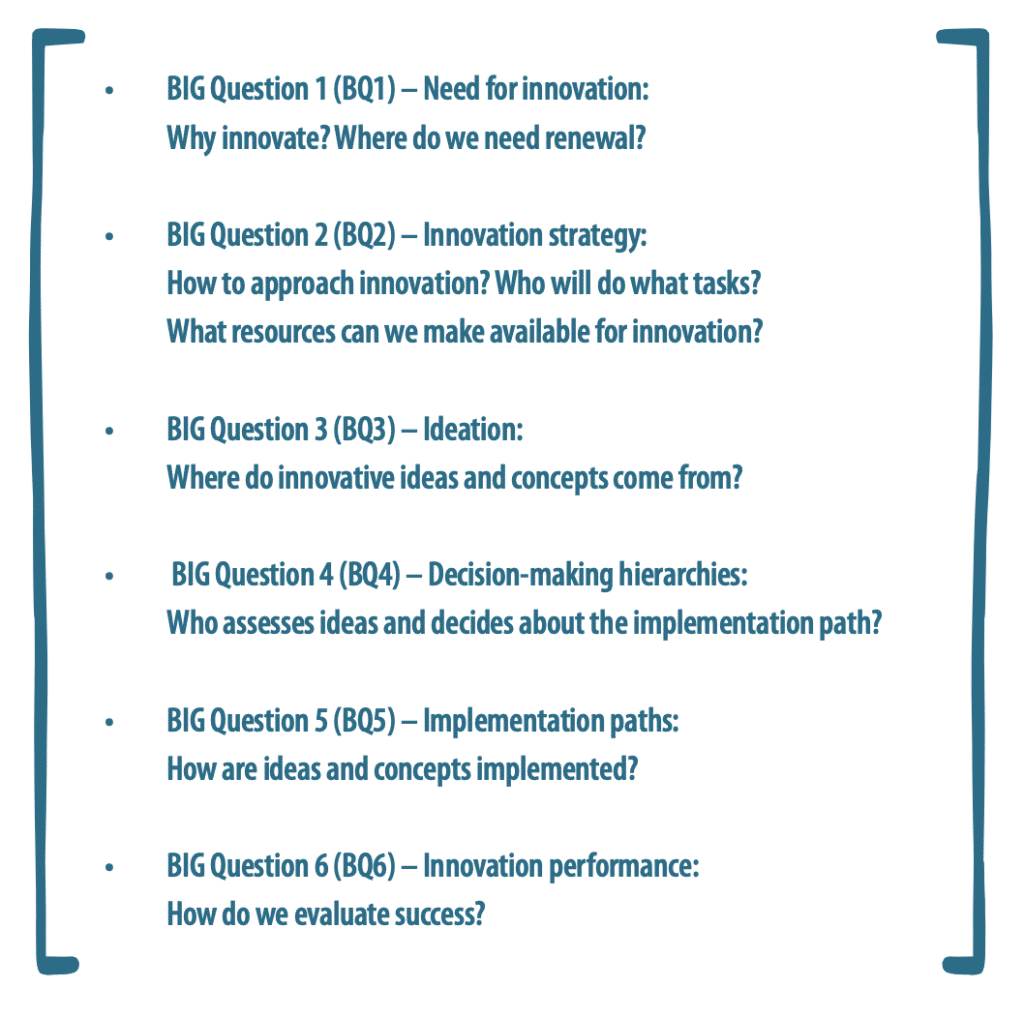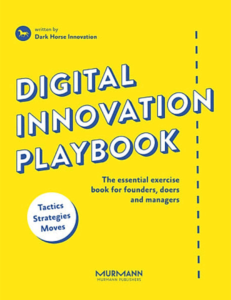Few companies will claim that innovation does not play a role in their business. Many will even take up the topic and never tire of telling how important innovation is and what competitive advantage it gives them. This may well be true, however, many companies are struggling to actually establish innovation in their organizations in order to minimize the effect of random developments on their business.
Innovation in a silo
In industries where innovation is traditionally more firmly anchored (for example in technology, pharmaceuticals, or the automotive sector), it is often strongly limited to the product itself (“product innovation”), or to the manufacturing process (“process innovation”). Organizationally, product and process development are often organized in separate departments or staff units, which are responsible for bringing new products to market in standardized cycles. However, one problem in this logic that should not be underestimated is that said R&D departments sometimes exist as isolated silos in their organizations and company-wide collaboration does not actually take place. Against the background of a strongly changing environment, however, it is central to interpret the topic of innovation across companies.
So how can cross-company innovation management be introduced in an organization? In order to answer this question, it is necessary to clear up some myths and misconceptions first:
Myths around innovation:
- Innovation is a project: No! Rather, innovation is to be seen as an inherent component of entrepreneurial activity, which spans the entire organization and to which no content-related limits are set.
- Innovation rests solely on the shoulders of management: In his bestseller “Reinventing Organizations” Frederic Laloux writes “Hierarchy cannot cope with complexity”. For this reason in particular, it is not advisable to “prescribe innovation from above”.
- Innovation is performance optimization: Whoever eliminates all errors from a carriage may get a carriage, but probably not the first automobile (Edward de Bono).
- Innovation requires ingenuity: One must not confuse innovation with creativity. Innovation can be learned and structured in process.
- Everything that is new is good: Just because something is different does not necessarily mean that it is better. Innovations must be critically scrutinized and their added value assessed!
Introduce innovation management
Establishing innovation management in itself is predominantly a question of mindset and culture. Modern leaders manage to set clear goals, create organizational framework conditions and give their teams the creative freedom that enables them to drive innovation.
“Innovation is predominantly a question of mindset and culture”
The possibilities of exactly how innovation management can be designed processually and organizationally are manifold, as is the available literature on the subject. Which model and which creative methods are suitable for your respective organizations must be evaluated separately in each individual case. Even if the wording of the individual phases varies depending on the model or literature, they can usually be summarized as follows:
Phases of the innovation process
- Exploration: In which areas can and should my organization innovate?
- Creation: How can idea generation be methodically supported and controlled?
- Evaluation: Does it make sense to pursue an idea further?
We at Leaders21 currently like to work with the “BIG Picture – The Graz Innovation Model”. What is appealing about this model is that it covers the most important components of innovation management without becoming too theoretical. Specifically, the entire innovation process is defined by 6 questions:

If you are planning to introduce structured innovation management in your organization, we can really recommend this model as a pragmatic, user-oriented solution. If you want to delve deeper into the practical side of innovation methodology, we recommend the “Digital Innovation Playbook”.
Do you have any questions on the topic of innovation? We are always happy to lend a hand with your doubts- just write to us!
Fritz Krassnitzer
Email: fritz.krassnitzer@leaders21.com
Link to profilepage


